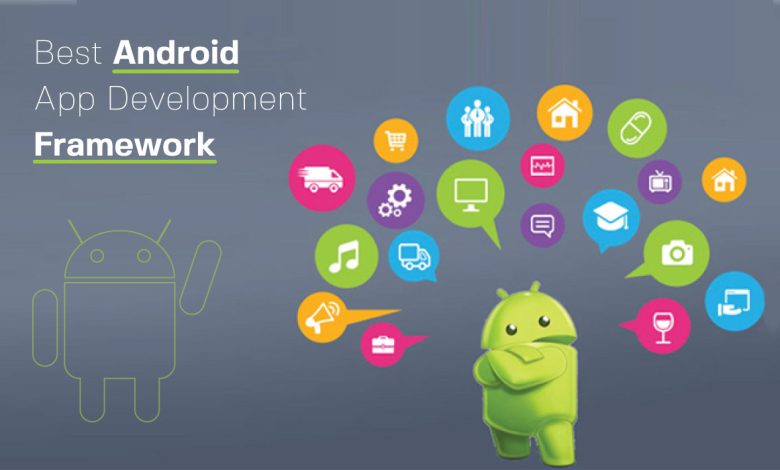Top Android Development Frameworks to Use in 2025

Android is the world’s most popular mobile operating system, powering over 70% of smartphones globally. With such a massive user base, Android app development remains one of the most lucrative and in-demand areas of software engineering.
However, the way apps are built has evolved dramatically. Gone are the days when developers relied solely on Java + Android SDK. In 2025, developers now have access to a wide range of modern frameworks that accelerate development, simplify UI design, and ensure cross-platform compatibility.
This article explores the top Android development frameworks to use in 2025, highlighting their strengths, use cases, and why they matter for developers today.
1. Flutter
Platform: Cross-platform (Android, iOS, Web, Desktop)
Language: Dart
Flutter, developed by Google, continues to dominate the cross-platform development space in 2025. Its “write once, run anywhere” approach allows developers to build native-like apps for Android and beyond using a single codebase.
Key Features:
- Hot Reload for real-time updates
- A rich set of Material Design and Cupertino widgets
- High performance with native-like rendering
- Expanding ecosystem for web and desktop apps
Best For:
- Startups and businesses targeting both Android & iOS
- Apps requiring custom UI and animations
- Rapid prototyping
2. Jetpack Compose
Platform: Native Android
Language: Kotlin
Jetpack Compose is Google’s official modern toolkit for building native Android UIs. By replacing XML layouts with a declarative Kotlin-based syntax, Jetpack Compose has streamlined Android UI development.
Key Features:
- Declarative UI, similar to SwiftUI
- Native integration with Android APIs
- Strong support for Material Design 3
- Easy state management with Kotlin Coroutines and Flow
Best For:
- Native Android-only apps
- Developers already working with Kotlin
- Apps requiring deep integration with Android hardware and APIs
3. React Native
Platform: Cross-platform
Language: JavaScript / TypeScript
React Native, developed by Facebook (Meta), remains a strong contender in 2025. Despite Flutter’s rise, React Native still powers thousands of production apps, including Instagram and Facebook.
Key Features:
- Reuse of JavaScript and React skills
- Large community and mature ecosystem
- Third-party plugin support
- Native performance for most use cases
Best For:
- Teams with strong JavaScript/React expertise
- Apps requiring faster development and iteration
- Businesses seeking long-term community support
4. Xamarin (.NET MAUI)
Platform: Cross-platform
Language: C#
Xamarin, now integrated into .NET MAUI (Multi-platform App UI), provides a unified framework for building Android, iOS, Windows, and macOS apps with a single C# codebase.
Key Features:
- Full access to native APIs
- Strong support for enterprise applications
- Shared UI code across platforms
- Integration with Microsoft Azure and Visual Studio
Best For:
- Enterprise apps
- Teams using the Microsoft ecosystem
- Developers with strong C#/.NET backgrounds
5. Kotlin Multiplatform Mobile (KMM)
Platform: Android & iOS (shared logic, native UI)
Language: Kotlin
KMM is Google’s push towards shared logic across platforms without sacrificing native UI performance. Unlike Flutter or React Native, it doesn’t replace native UIs but allows developers to share business logic written in Kotlin.
Key Features:
- Shared codebase for data, networking, and business rules
- Native UI for Android (Jetpack Compose) and iOS (SwiftUI)
- Strong integration with Android Studio
- Perfect for apps requiring native experience
Best For:
- Teams needing both Android and iOS apps with shared logic
- Apps that prioritize native UI
- Long-term projects requiring scalability
6. Unity (for Android Game Development)
Platform: Cross-platform (Games)
Language: C#
While primarily known as a game engine, Unity is also widely used for interactive Android apps, AR, and VR applications.
Key Features:
- 2D/3D game development
- AR/VR support with ARCore integration
- Cross-platform publishing
- Asset store with thousands of ready-to-use tools
Best For:
- Game developers
- AR/VR experiences
- Simulation and educational apps
7. Ionic
Platform: Cross-platform (Hybrid)
Language: JavaScript / TypeScript (Angular, React, Vue)
Ionic is a framework for building hybrid apps using web technologies like HTML, CSS, and JavaScript. It wraps web apps inside a native container using Capacitor.
Key Features:
- Build apps using popular frontend frameworks
- Web-first approach
- Plugins for native device APIs
- Faster prototyping
Best For:
- Teams with strong web development expertise
- Apps that don’t require heavy native performance
- MVPs and startups
8. Apache Cordova (Legacy but Still Used)
Platform: Hybrid
Language: JavaScript/HTML/CSS
Cordova is one of the oldest frameworks for hybrid development. While its popularity has declined due to modern alternatives like Flutter and Ionic, it is still used in legacy projects.
Best For:
- Maintaining old hybrid apps
- Teams with limited native development experience
Choosing the Right Framework in 2025
The “best” framework depends on your project goals, team expertise, and performance requirements:
- Need fast, beautiful cross-platform apps? → Flutter
- Want native Android apps with modern UI? → Jetpack Compose
- Strong JavaScript team? → React Native
- Enterprise and Microsoft ecosystem? → .NET MAUI
- High-performance games or AR/VR? → Unity
- Hybrid/web-based approach? → Ionic or Cordova
Conclusion
In 2025, Android development has evolved into a diverse ecosystem of frameworks catering to different needs. While Flutter and Jetpack Compose dominate new projects, frameworks like React Native and .NET MAUI remain relevant for specific use cases.
The right choice depends on balancing developer skills, app requirements, and long-term maintainability. Regardless of the framework, one thing is certain: Android app development will continue to thrive as one of the most exciting fields in software engineering.

